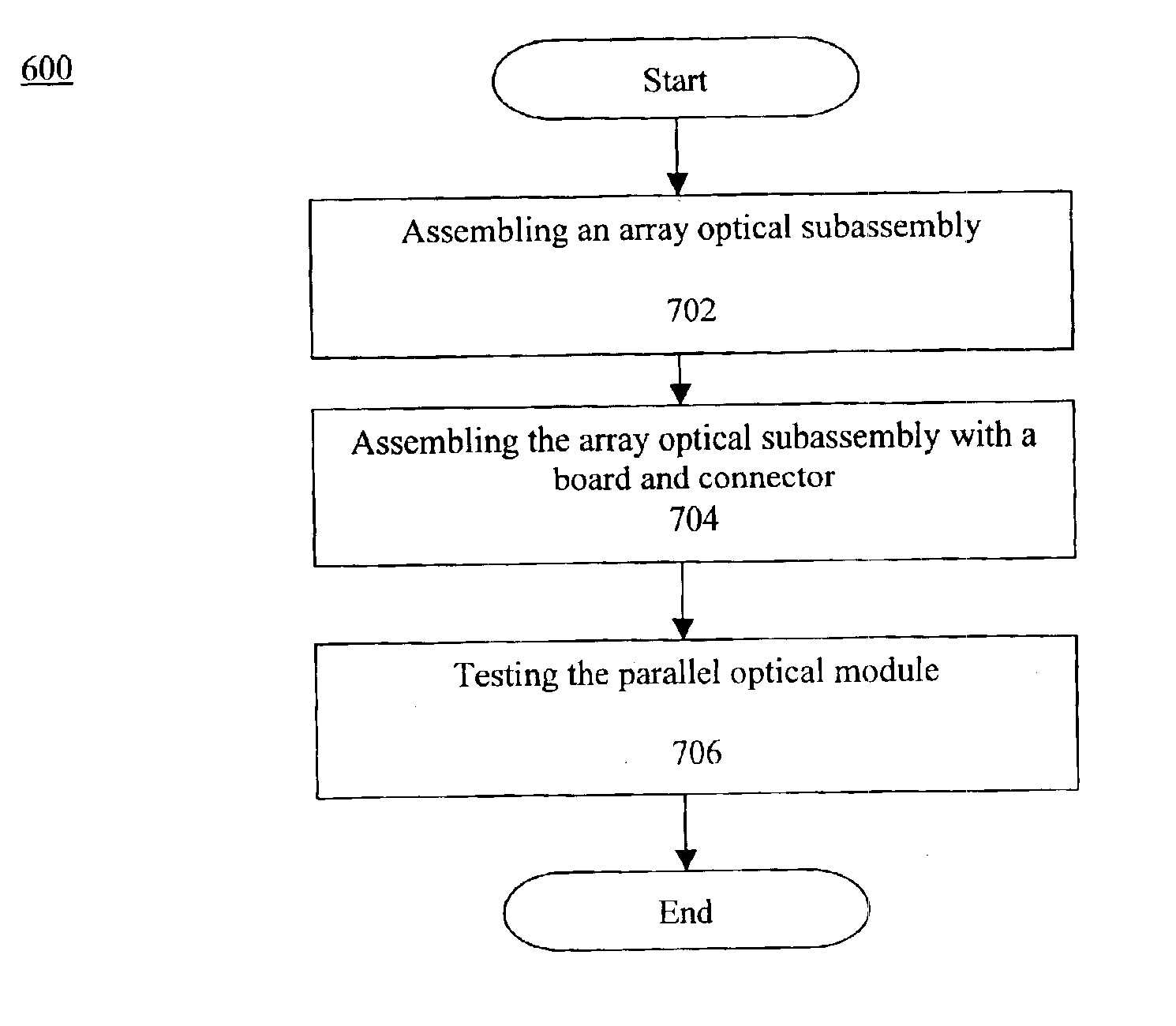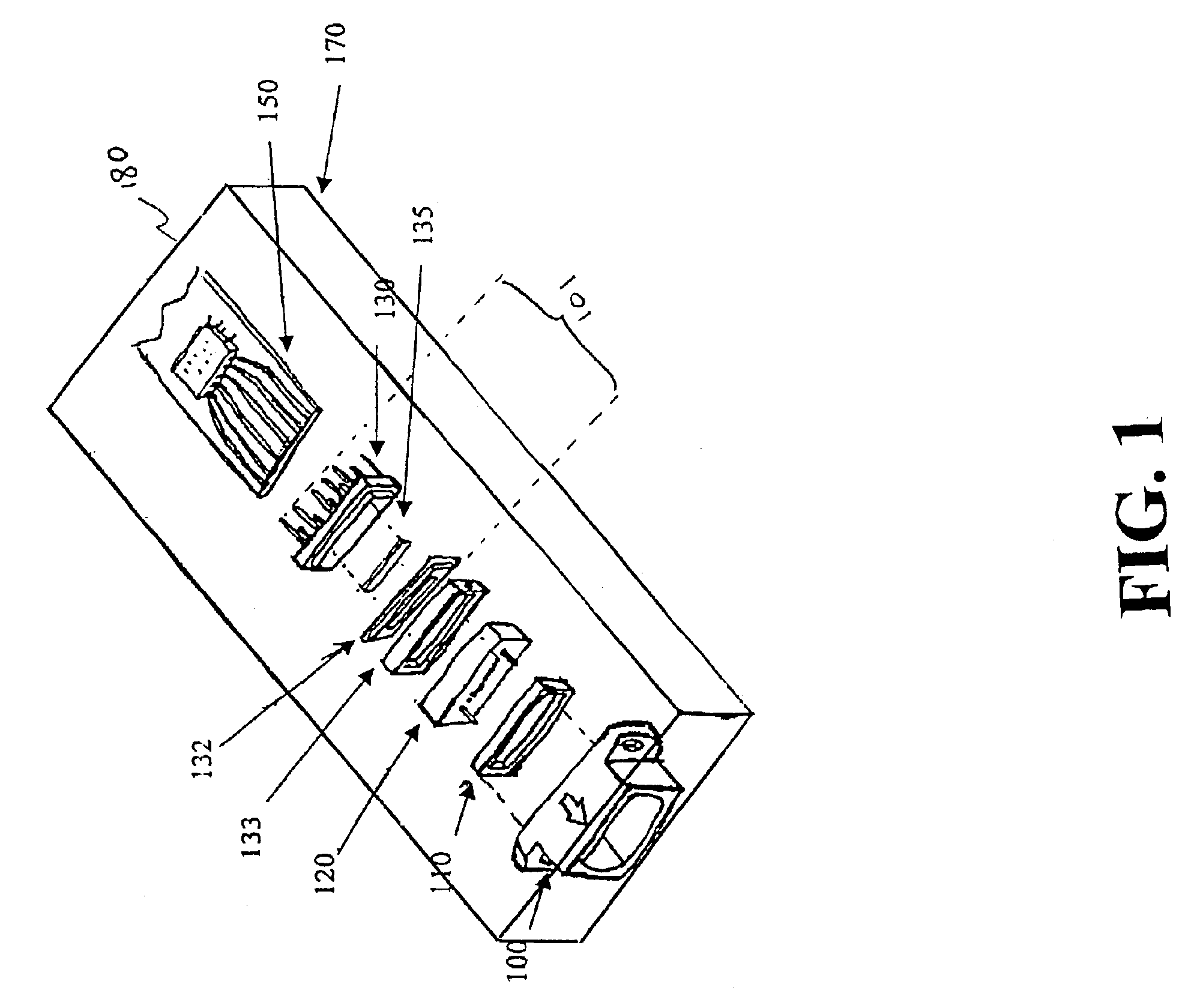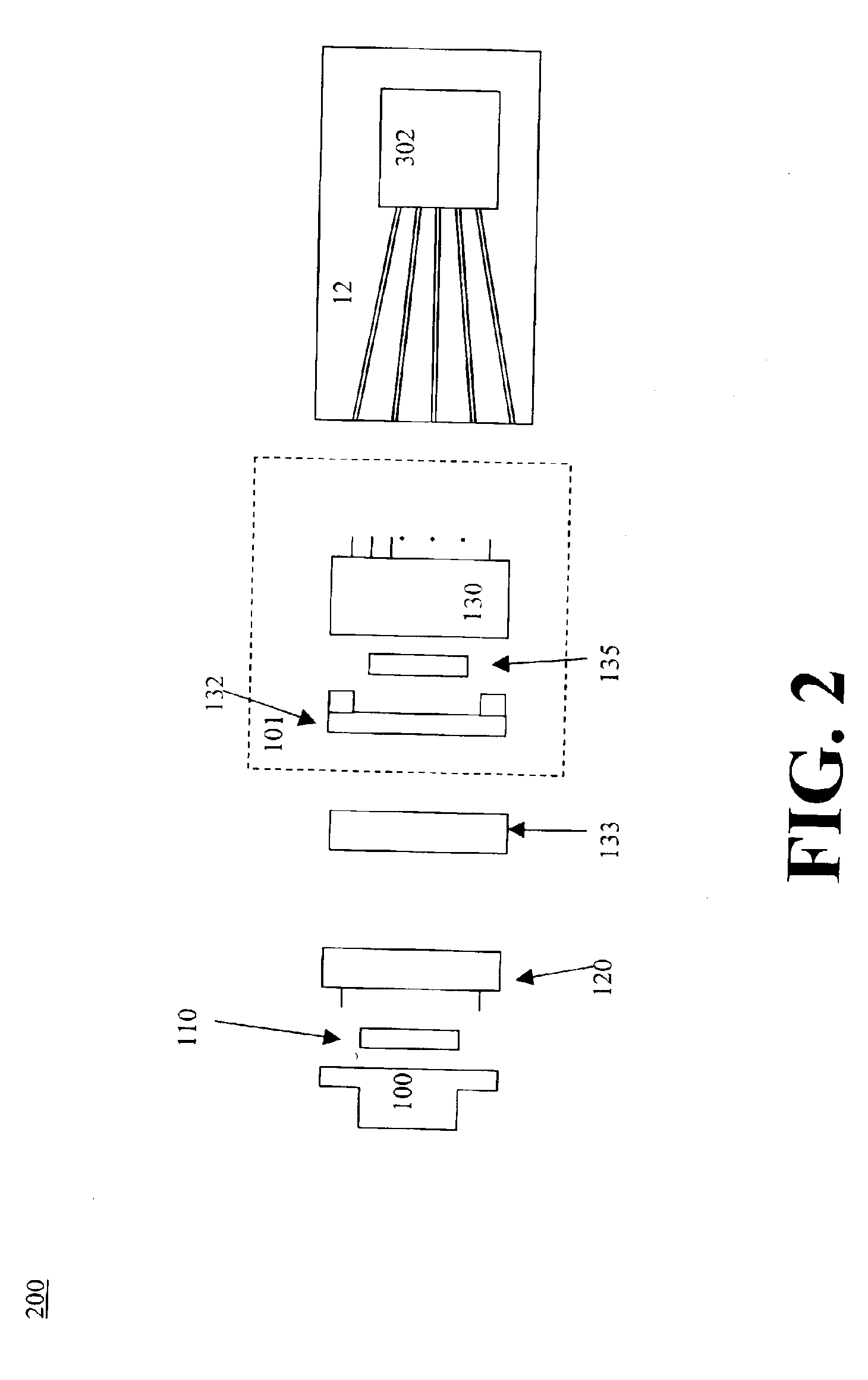Method and apparatus for parallel optical transceiver module assembly
a technology of parallel optical transceiver and module, applied in the field of network communication, can solve the problems of affecting the majority of failures of the transmitter and receiver module, and the sensitiveness/sensitivity of the optoelectronic device, etc., and achieve the effect of improving the yield of the modul
- Summary
- Abstract
- Description
- Claims
- Application Information
AI Technical Summary
Benefits of technology
Problems solved by technology
Method used
Image
Examples
Embodiment Construction
An apparatus and method for manufacturing a parallel optical module, such as a transceiver, transmitter or receiver, using a modular process and hermetically or near-hermetically sealed optoelectronic array devices are discussed.
In the following description, for purposes of explanation, numerous specific details are set forth to provide a thorough understanding of the present invention. It will be apparent, however, to one skilled in the art that these specific details may not be required to practice the present invention. In other instances, well-known circuits and devices are shown in block diagram form to avoid obscuring the present invention.
It is understood that the present invention may contain transistor circuits that are readily manufacturable using well-known art, such as for example CMOS (“complementary metal-oxide semiconductor”) technology, or other semiconductor manufacturing processes. In addition, the present invention may be implemented with other manufacturing proce...
PUM
 Login to View More
Login to View More Abstract
Description
Claims
Application Information
 Login to View More
Login to View More - R&D
- Intellectual Property
- Life Sciences
- Materials
- Tech Scout
- Unparalleled Data Quality
- Higher Quality Content
- 60% Fewer Hallucinations
Browse by: Latest US Patents, China's latest patents, Technical Efficacy Thesaurus, Application Domain, Technology Topic, Popular Technical Reports.
© 2025 PatSnap. All rights reserved.Legal|Privacy policy|Modern Slavery Act Transparency Statement|Sitemap|About US| Contact US: help@patsnap.com



